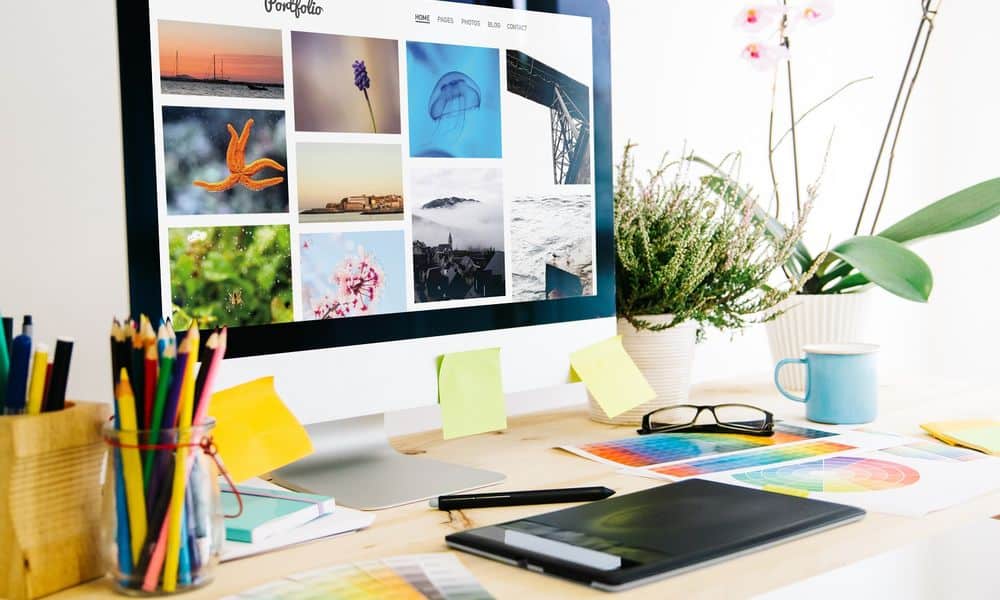
A digital portfolio is one of the most effective tools for showcasing your skills, style, versatility, and career accomplishments. It’s your personal brand statement, your resume in action, and often your first impression with a potential employer or client. Especially for designers, marketers, and other creative professionals, a thoughtfully curated digital portfolio can be the deciding factor in landing a dream job or freelance project. It gives hiring managers and clients a clear, visual understanding of what you do and why it matters.
In this post, we’ll explore what makes a great digital portfolio in 2025, how to build one that gets noticed, and what tools and trends to keep in mind.
A digital portfolio is a curated online collection of your best creative work, designed to demonstrate your skills, experience, and creative process to potential employers, clients, or collaborators. Unlike traditional print portfolios, digital portfolios offer dynamic, interactive experiences that can include video content, animations, case studies, and real-time updates.
In 2025, your digital portfolio serves multiple critical functions: it validates your expertise in an increasingly skills-based hiring market, differentiates you from your competitors using similar AI and tech tools, and provides tangible evidence of your ability to solve real-world design challenges. With some hiring managers spending mere seconds on initial portfolio reviews, making a powerful first impression is critically important.
Creating a portfolio that stands out and opens doors takes more than simply uploading your best work. It requires thoughtful planning around presentation, user experience, and storytelling.
Your digital portfolio should function as a narrative journey that guides viewers through your creative thinking and problem-solving approach with polished visuals. Using a storytelling approach gives hiring managers insight into how you work and think and helps them envision how you will add value to their team.
Consider including behind-the-scenes content that reveals your methodology: initial sketches, mood boards, wireframes, user research insights, and iteration phases. This transparency helps differentiate you from candidates who only show end results, offering a fuller view of your strategic and creative process. Put simply, it’s a great way to market yourself as a creative candidate. Consider including:
Transform your portfolio pieces into mini case studies that highlight the business impact of your work. For each major project include:
Utilizing case studies in your portfolio demonstrates your ability to think strategically about design decisions and shows potential employers that you understand the business context of creative work.
The creative industry moves quickly, with new tools, platforms, and design trends emerging constantly. Your digital portfolio must reflect your ability to stay current and adapt.
Establish a quarterly portfolio review schedule to ensure your work remains fresh. This practice serves multiple purposes:
Demonstrate your adaptability by including work that shows your proficiency with current industry tools and platforms. This might include:
How your design portfolio looks and functions is just as important as what’s in it. In 2025, your portfolio needs to work smoothly across all devices and be easy for everyone to use.
With many portfolio views happening on mobile devices, it’s critical to ensure your portfolio delivers an exceptional experience across all screen sizes:
Organize your design portfolio content using intuitive categories and clear hierarchies:
Including personal work in your digital portfolio demonstrates passion, creativity, and initiative beyond client requirements. This approach is especially valuable for recent graduates building their first professional portfolio or for professionals returning from a career break who want to showcase their recent work.
Personal projects offer the freedom to explore creative directions that may not be possible in client work:
Adding personal work to your digital portfolio can:
The small details in your digital portfolio presentation can make the difference between landing an interview and getting overlooked.
Maintain a cohesive design language throughout your portfolio:
Make it effortless for interested parties to connect with you:
Selecting the appropriate platform for your digital portfolio depends on your technical skills, budget, and specific career goals.
Website Builders (Squarespace, Wix, Adobe Portfolio): Ideal for quick setup and professional results without coding knowledge. These platforms offer:
Custom Solutions (WordPress, custom HTML/CSS): Better for those with technical skills who want more creative control:
While your primary design portfolio should live on a platform you control, a strategic social media presence amplifies your reach:
Track your portfolio’s performance to understand what resonates with your target audience and identify areas for improvement.
Monitor key indicators of portfolio effectiveness:
Actively seek input from industry peers, mentors, and potential clients:
For 25 years, 24 Seven has connected creative talent with opportunities with top brands, agencies, and fast-growing companies. Our team of specialized creative recruiters takes the time to understand your goals and align you with roles that match your skills and aspirations.
Whether you’re launching your career, making a shift, or ready to move to the next level, we offer the expert guidance, insider insights, and industry connections to help you succeed.
Ready to take the next step? Put your digital portfolio to work and explore creative jobs made for you, or connect with our team to take the next step in your creative journey!